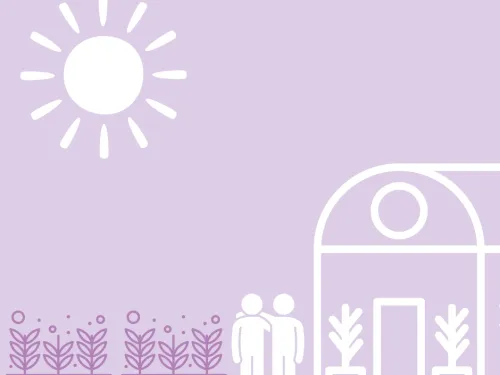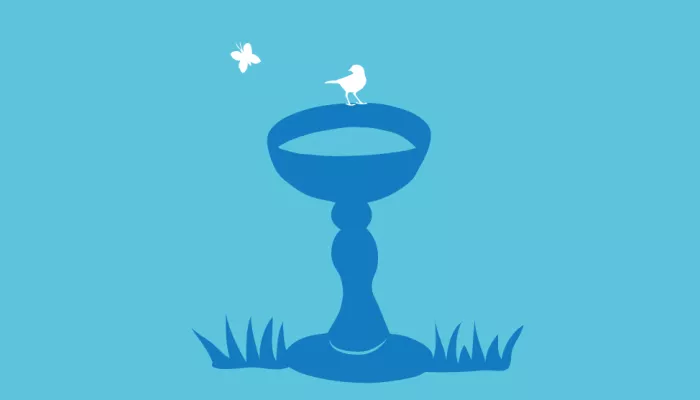
Sustainable food growing
On this page you'll find useful tips on how to grow food in ways that help your community and the biodiversity around it

All animals need water to survive. By providing a water source in your garden, you can invite in a whole menagerie!
Water is essential for wildlife to thrive, but it isn’t just for drinking. Amphibians like newts, frogs and toads use water as shelter and breeding grounds. Butterflies get valuable minerals and salts from slightly muddy water, and birds use water to bathe and remove parasites.
Just about any stand of water in your yard, from a tiny puddle to a pond, will be used by one kind of animal or another. To make it as appropriate as possible, ensure your water source is shallow with gradual and rough-textured edges, so that anything that climbs in can get out again
Water is essential for wildlife to thrive, but it isn’t just for drinking!
During hot summer weather, it is important to have plenty of water for animals and birds to drink and bathe in. But don’t stop there! It is also important to keep the water topped up during the chilly winter months as sources of water can become frozen and more difficult to find. If you install a bird bath, make sure it has gradual edges and is roughly textured. If you want to go the extra mile, hanging a drip jug above your bird bath will attract more birds as they hear the dripping water.
Remember: When temperatures drop, water freezes, making it difficult for wildlife to find fresh water to drink. Break the water on bird baths daily or replace with tepid water.
Most butterflies feed on nectar, but did you know they also need water and minerals to stay hydrated and healthy? Butterflies can't land on open water, so some rely on shallow puddles and wet sand or soil to get the water, salts and minerals that they need.
You can help out at home by creating a simple butterfly 'puddling station':


On this page you'll find useful tips on how to grow food in ways that help your community and the biodiversity around it

In this page you'll find an array of information to how to best help wildlife over the changing seasons each year

On this page you'll find exciting information on getting involved with citizen science project in your own home and community

On this page you'll find useful information on how to take environmental action from home and in your community

On this page you'll find useful information on how to reach out to others about nature & the environment

On this page you'll find excellent tips on how to shop sustainably and be mindful of what you're eating